East Cumbria doesn't always offer the most hospitable of climates to make a garden; nor does Lowther Castle offer the most reliable of addresses. Built between 1806 and 1814, the place has overwhelmed every single generation of Lowther, with James Lowther, who inherited the castle in 1953, deciding to demolish it – leaving only the shell intact – to escape his grandfather’s death duties of £25 million.
The current custodian, the Hon William James Lowther (known as Jim), sees the garden as key to its future success. He commissioned historic landscape consultant Dominic Cole to explain the significance of the 17th-century garden, and designer Dan Pearson to introduce a new vision to bring it back to life.
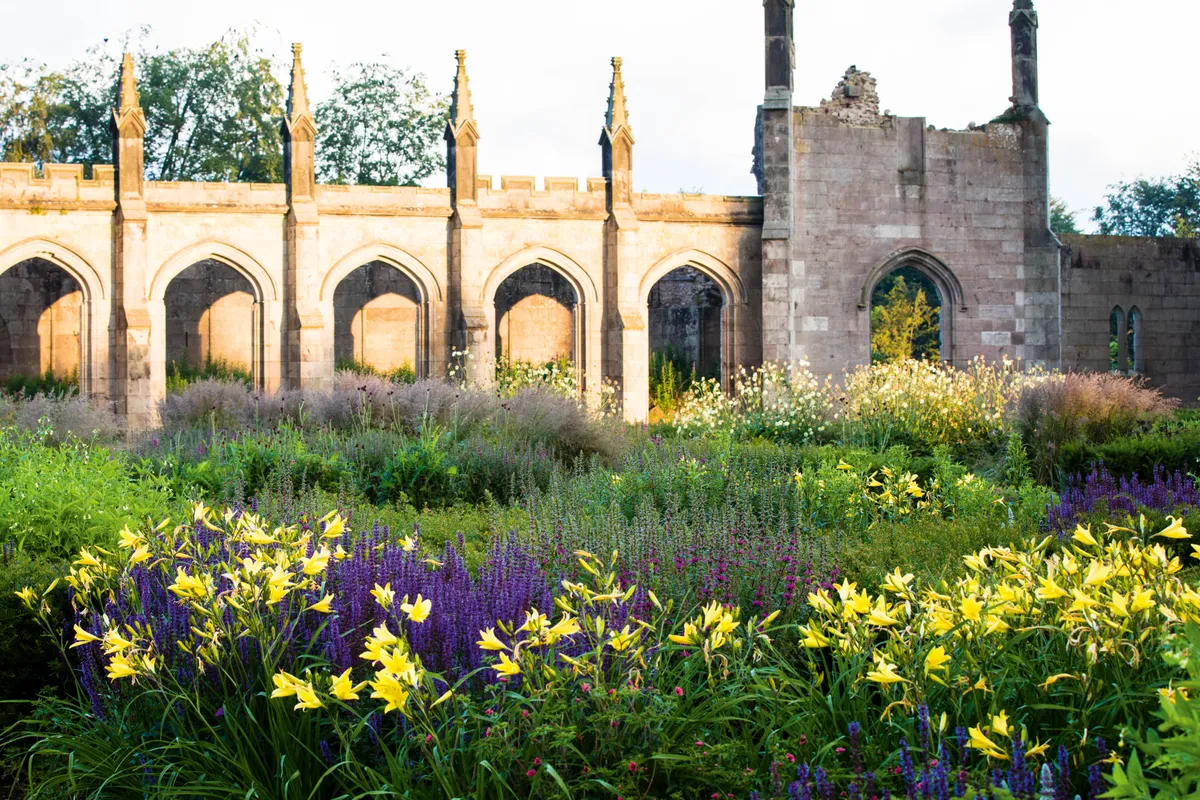
Dan delivered his master plan in 2012, explaining that he wanted to “make the garden a horticultural delight and deliver an experience that will allow people to feel part of the ruins”. With large gardens it is usually important to establish a clear narrative, perhaps a recurring motif or maintenance aesthetic.
At Lowther, however, Dan has deliberately challenged that notion, and instead assembled a potential series of conflicts, with an aim of creating different rhythms. The restored courtyard, for example, is minimalist and contemporary; there is a ghostly quality about the hornbeam columns he has planted to provide both shade and intimacy, but they also act in stark contrast to the ruinous castle nearby.
These same rhythms are in the garden. At one moment it might feel overwhelming, then there is reward with a hotspot in a forest clearing. Then a breather again, before being rewarded once more. This slow and gentle unravelling of a space is magical, and typical of Dan’s work. “Through these moments of high and low, the language of the garden becomes legible and the whole place begins to sing,”says Dan.
Read about Dan Pearson's Rose Garden at Lowther Castle, which is now open to the public and the appointment of Lowther's new head gardener Andrea Brunsendorf.
IN BRIEF
Name Lowther Castle.
What Garden by designer Dan Pearson that is emerging from the castle ruins of the family seat of the Lowther family.
Where Southwest of Penrith, Cumbria.
Size 130 acres of gardens and castle terraces set within 75,000 acres of estate.
Climate Cool summers and cold winters.
Soil Clay.
Hardiness rating USDA 8.
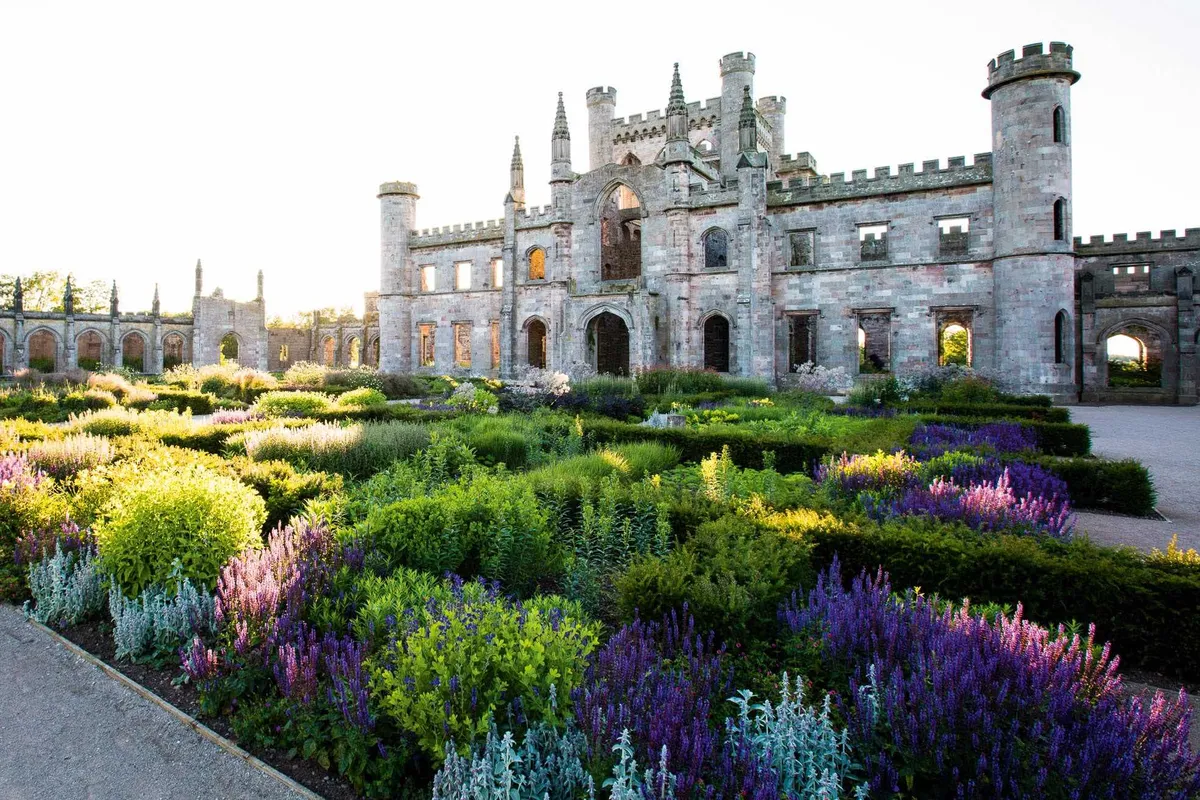
The contrast is stark, yet the connection between the Tapestry Garden and the castle appears effortless. Dan has used low curtains of Taxus and Panicum ‘Rehbraun’ to provide architecture and inject rhythm into the planting, not only linking it visually to the castle, but also allowing the repeated mounds of perennials to be untamed, moody and wild.
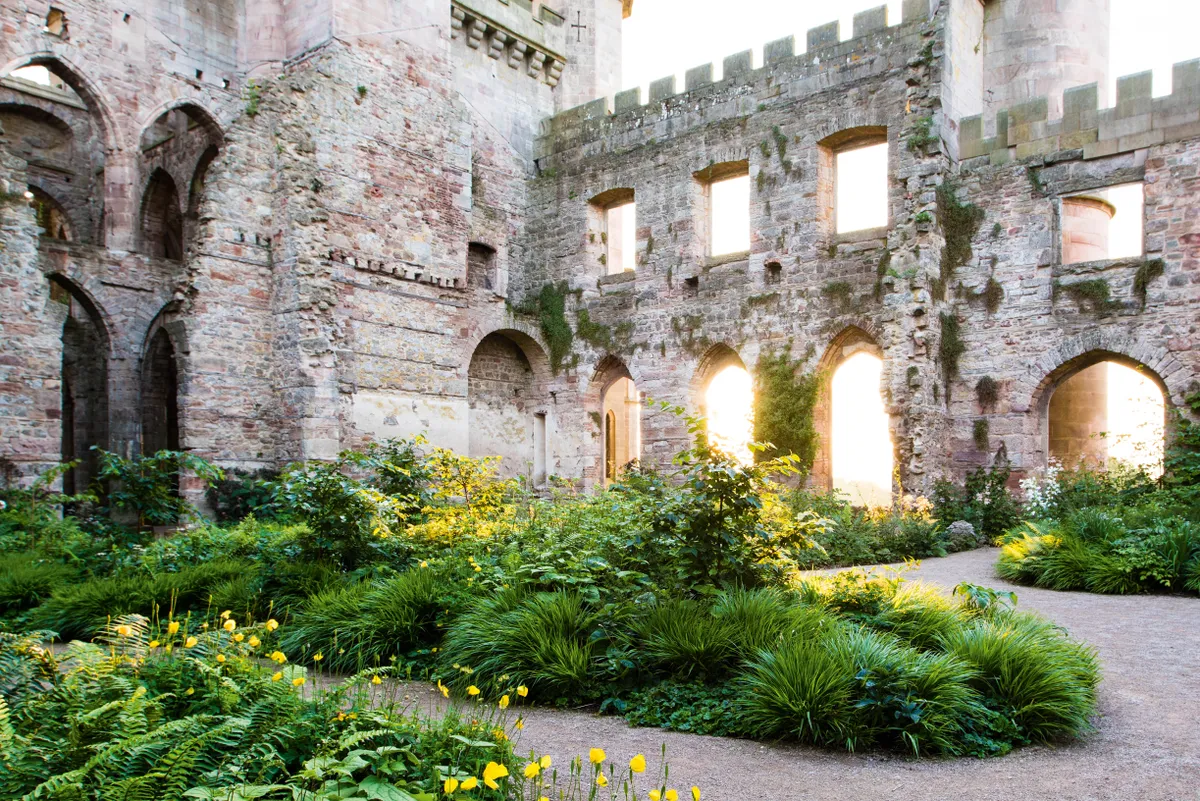
Within the castle ‘interior’ Dan has reinstated a feeling of mystery, where in time climbers, such as Tropaeolum speciosum and Akebia longeracemosa,
will festoon the windows rather like curtains.
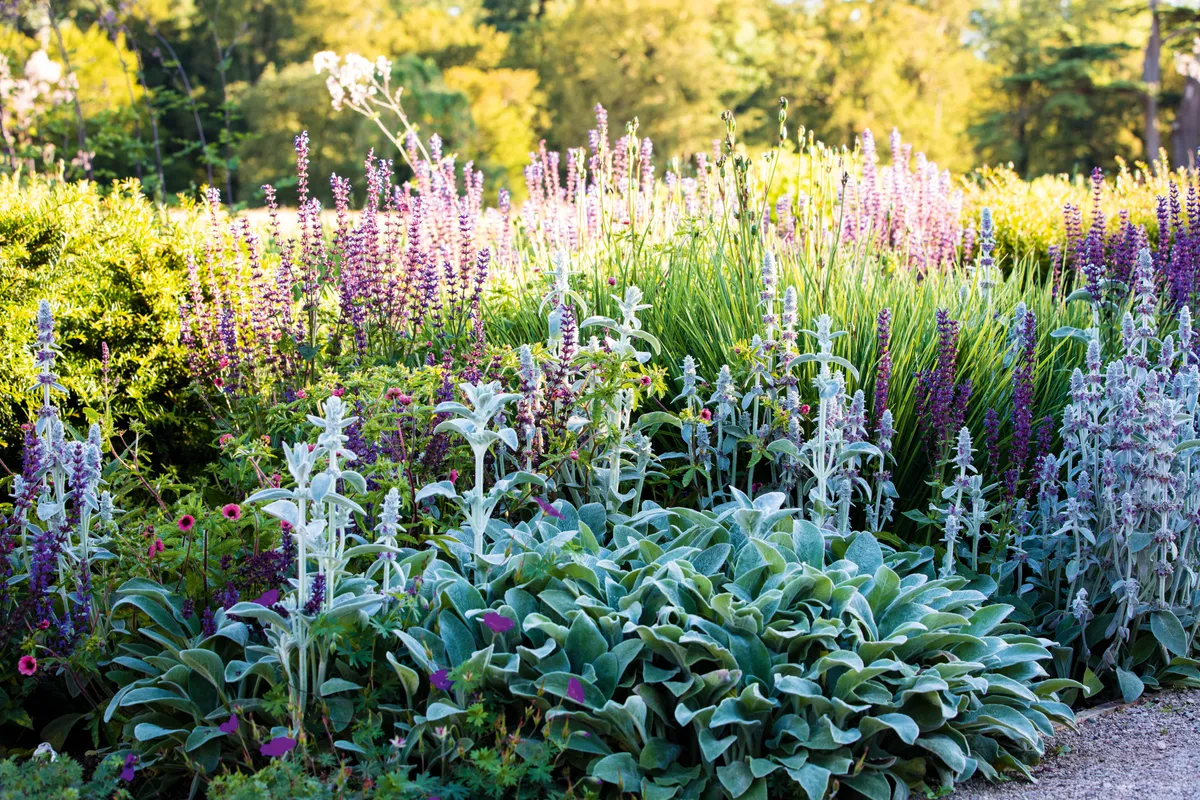
In the parterre Dan blends familiar plants, such as Stachys byzantina, Salvia pratensis ‘Indigo’ and Potentilla nepalensis ‘Miss Willmott’, to replicate the colours of a faded tapestry.
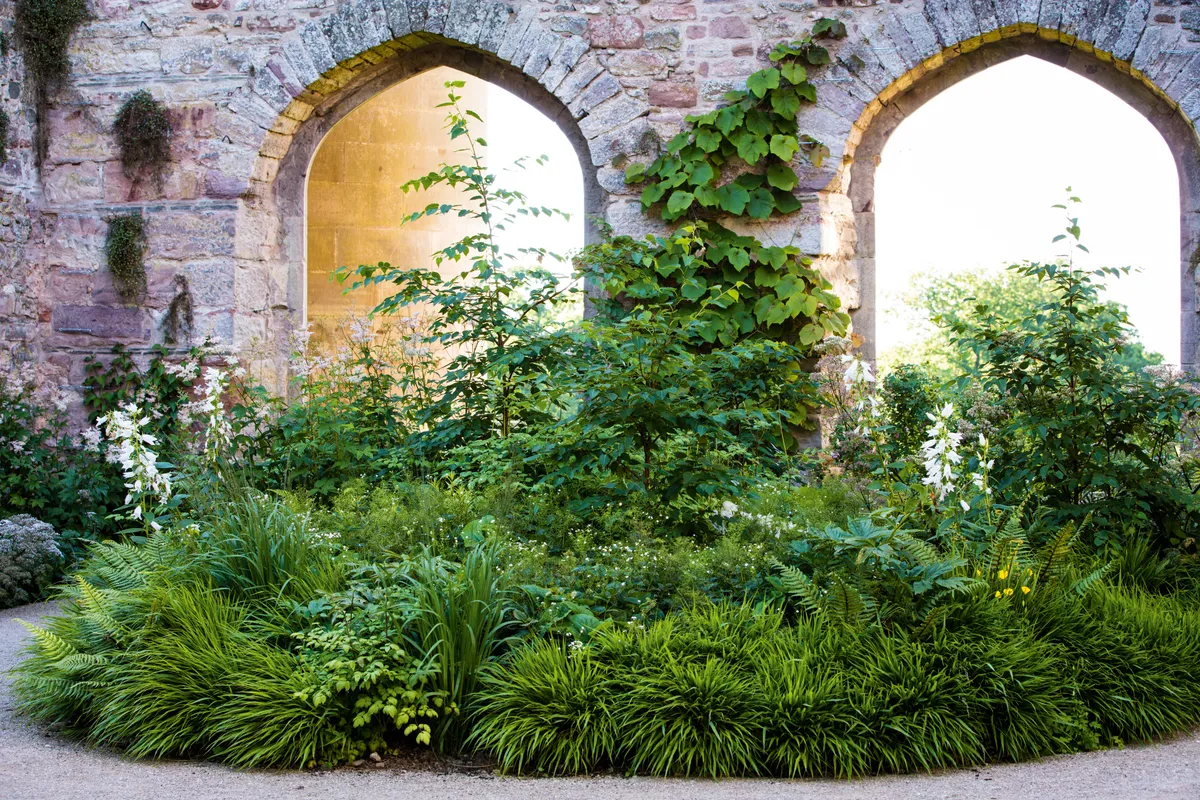
In the castle ‘interior’ Hakonechloa macra swirls and eddies around, creating a blurred and informal edge to the planting.

Successive layers of Cephalaria gigantea are contained within curtains of Taxus. Later, the colouring of the low yew hedge will act as a perfect foil for the creamy-white flower heads of Actaea simplex ‘James Compton’.
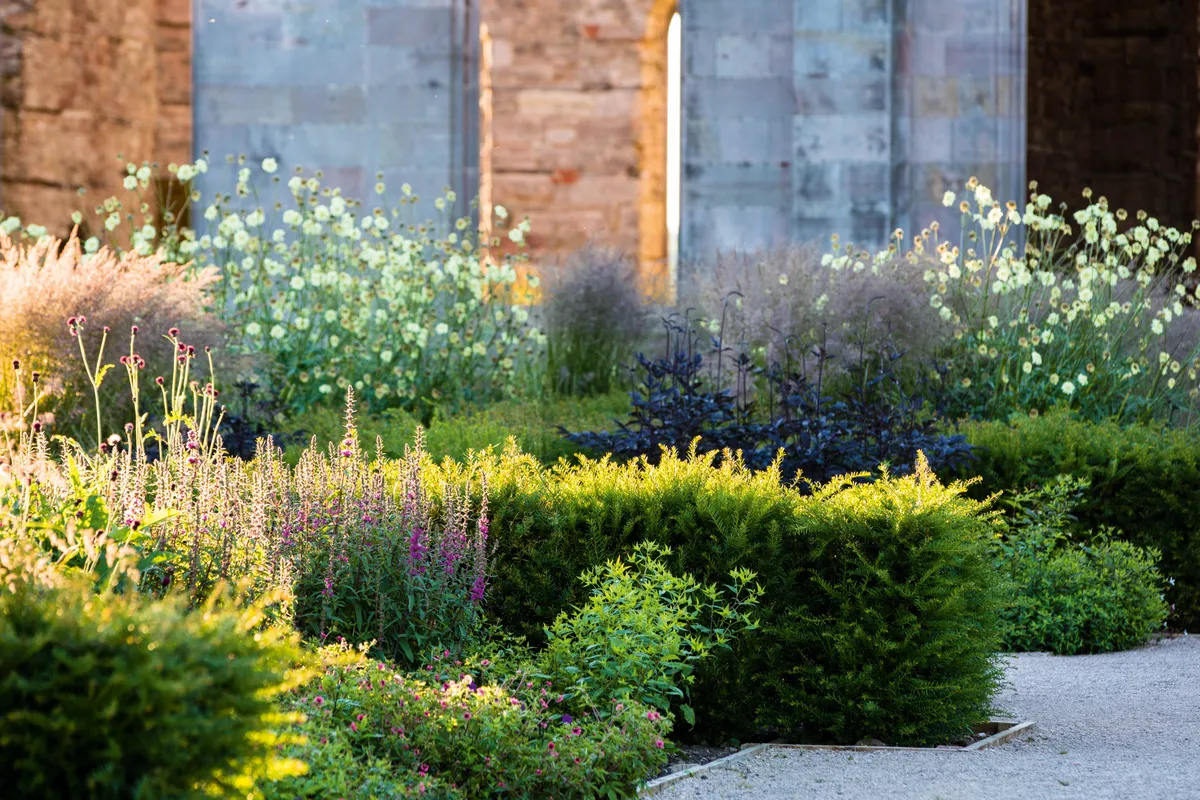
Hemerocallis ‘Hyperion’ with its canary-yellow flowers is a plant that is out of current favour. Here in the parterre Dan has used it to great effect, contrasting the yellow heads against the moody, purple-blue spikes of Salvia pratensis ‘Indigo’.
Dan Pearson's key plants at Lowther Castle
Salvia pratensis ‘Indigo’
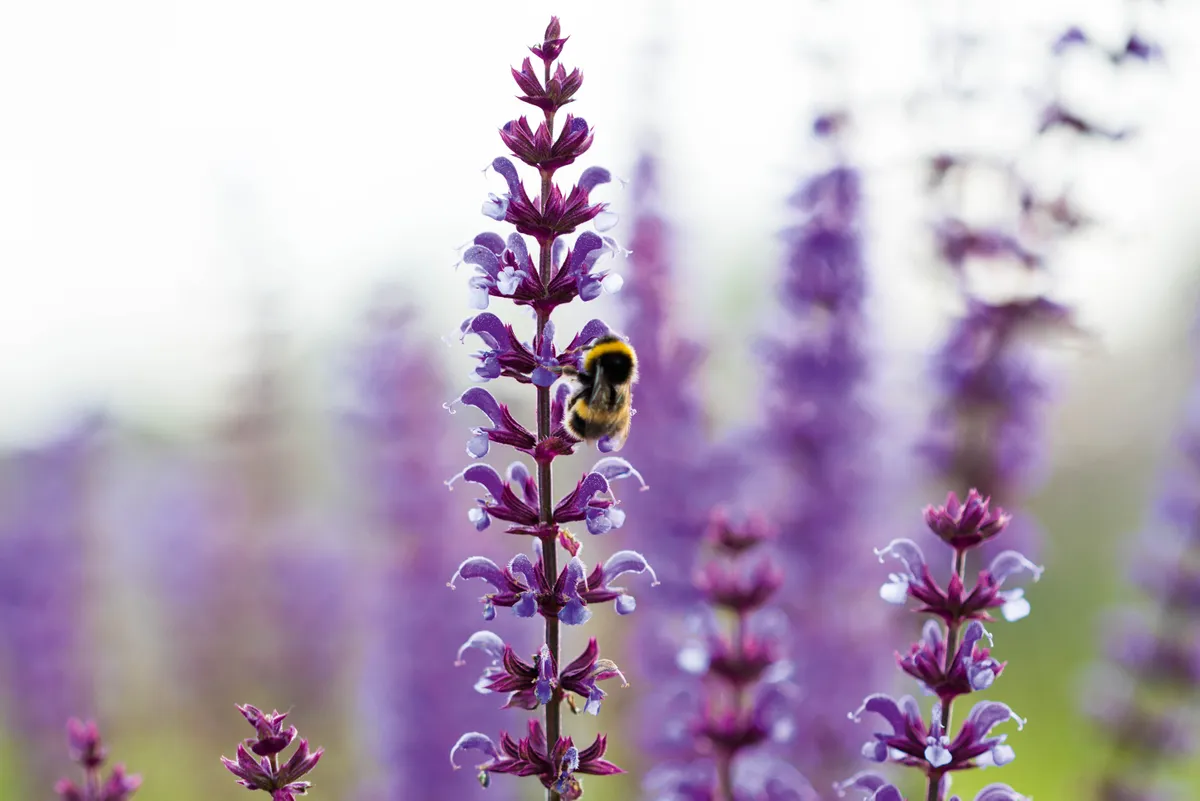
One of several hardy Salvia with attractive calyces. Prune by half its height after the first flush and it will flower again. 90cm. AGM
Potentilla nepalensis ‘Miss Willmott’
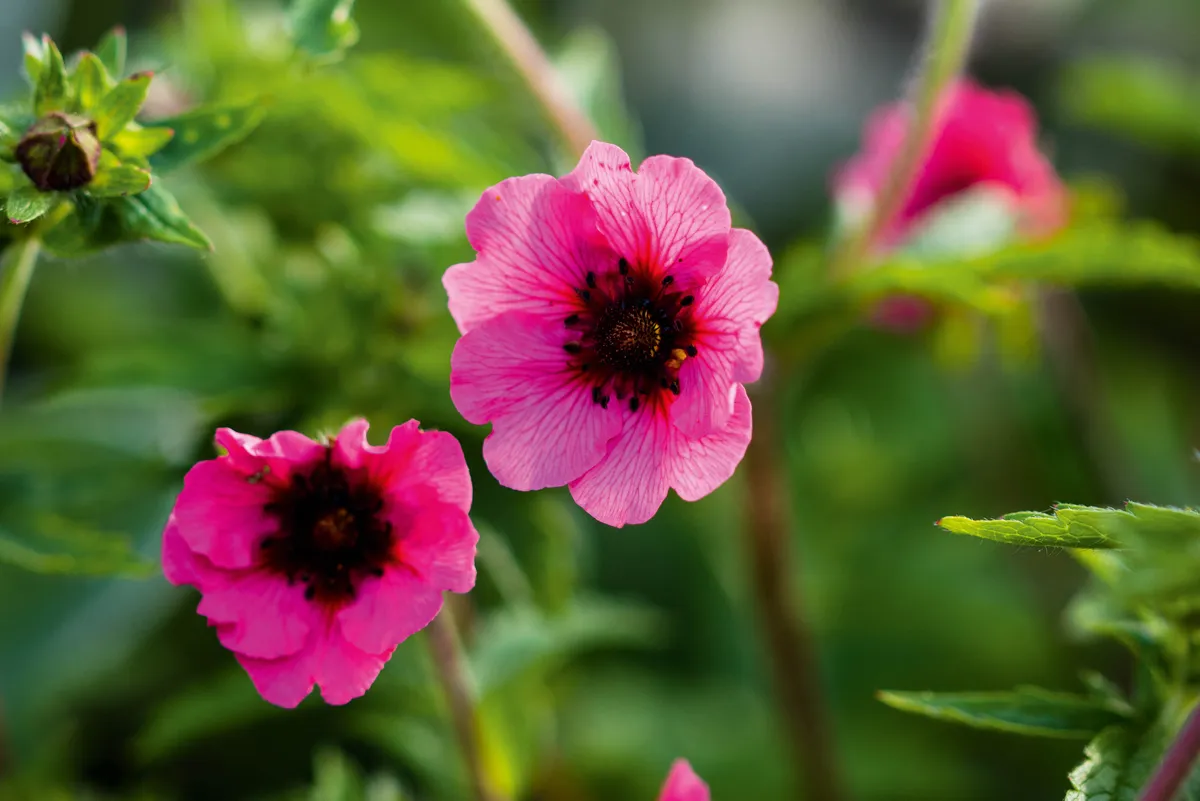
An old hybrid of worth dating from 1920. Abundant, warm cherry-pink flowers, each with a conspicuous dark eye. 50cm.
Baptisia australis

A plant that enjoys full sun and deep soil. Your effort is rewarded with intense blue flowers and lupin-like foliage. 1.2m. AGM.
Nepeta govaniana
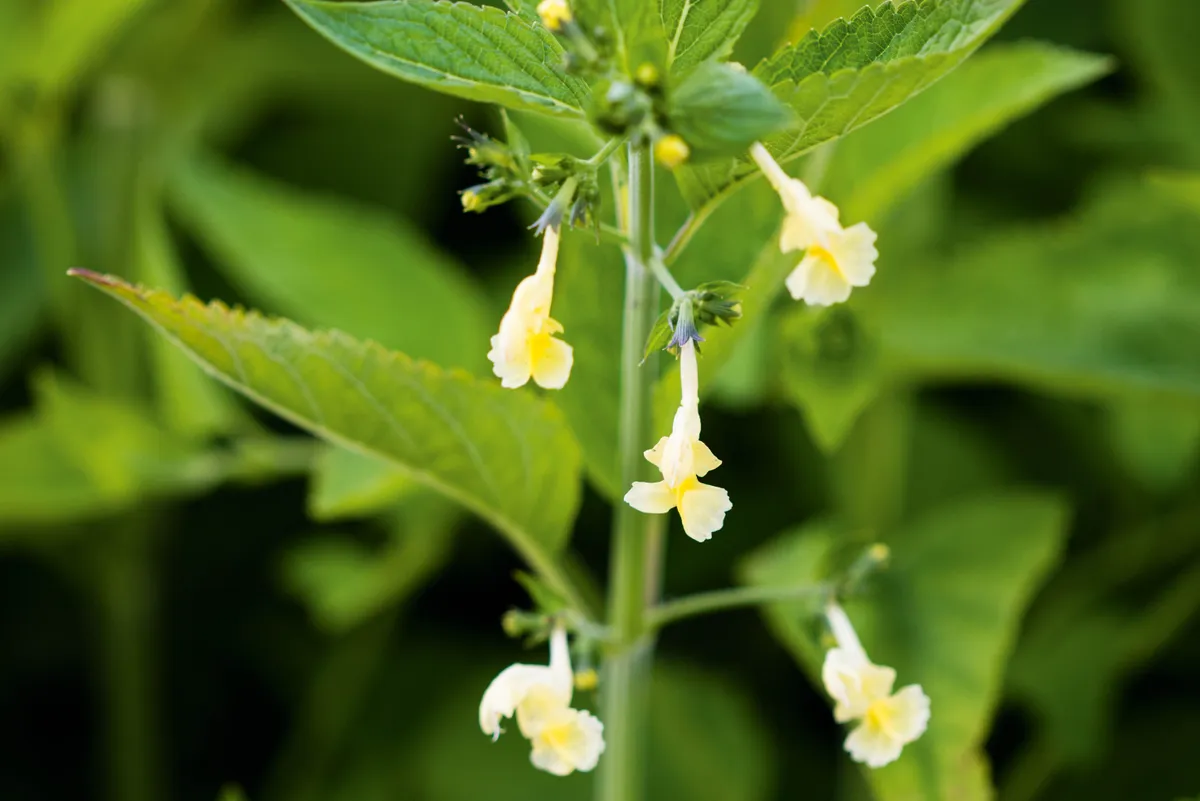
A plant that is often mistaken for something else. Its delicate, light yellow flowers last for many weeks. 90cm.
Campanula ‘Purple Sensation’
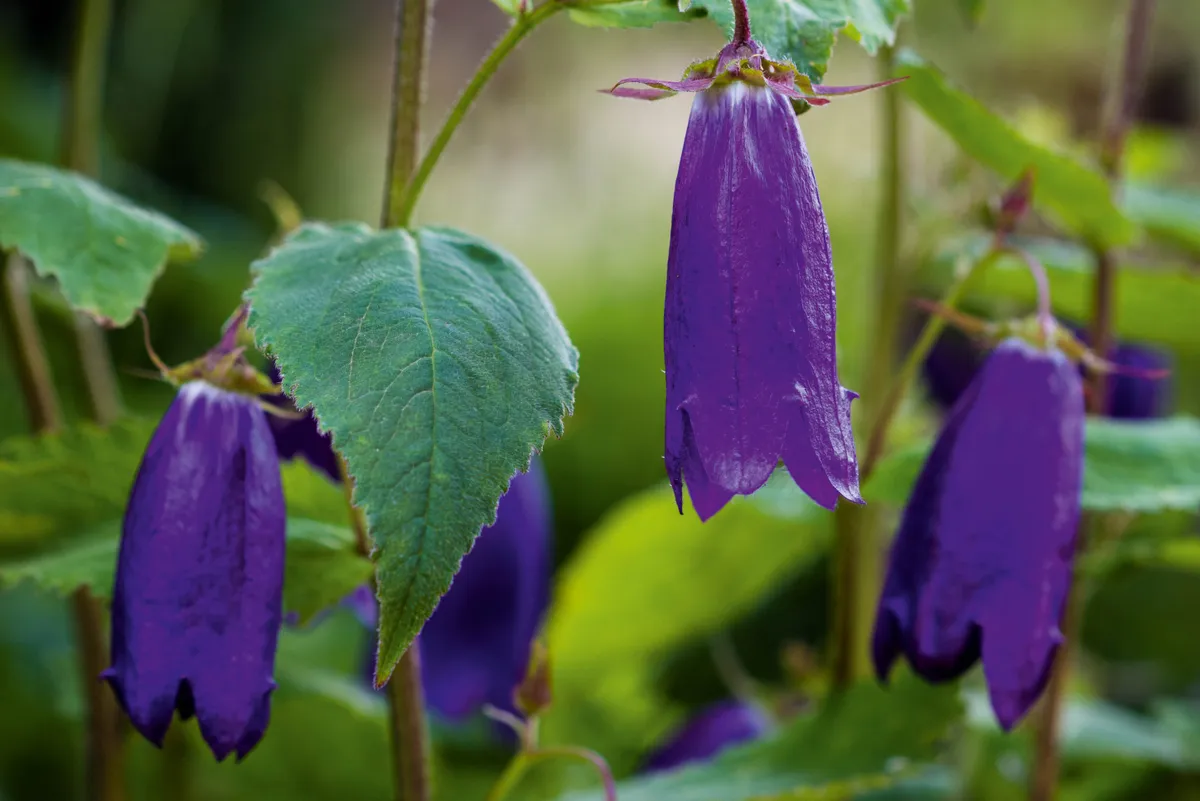
Dark-purple flowers emerge from near-black buds and hang in great profusion. 60cm.
Selinum wallichianum
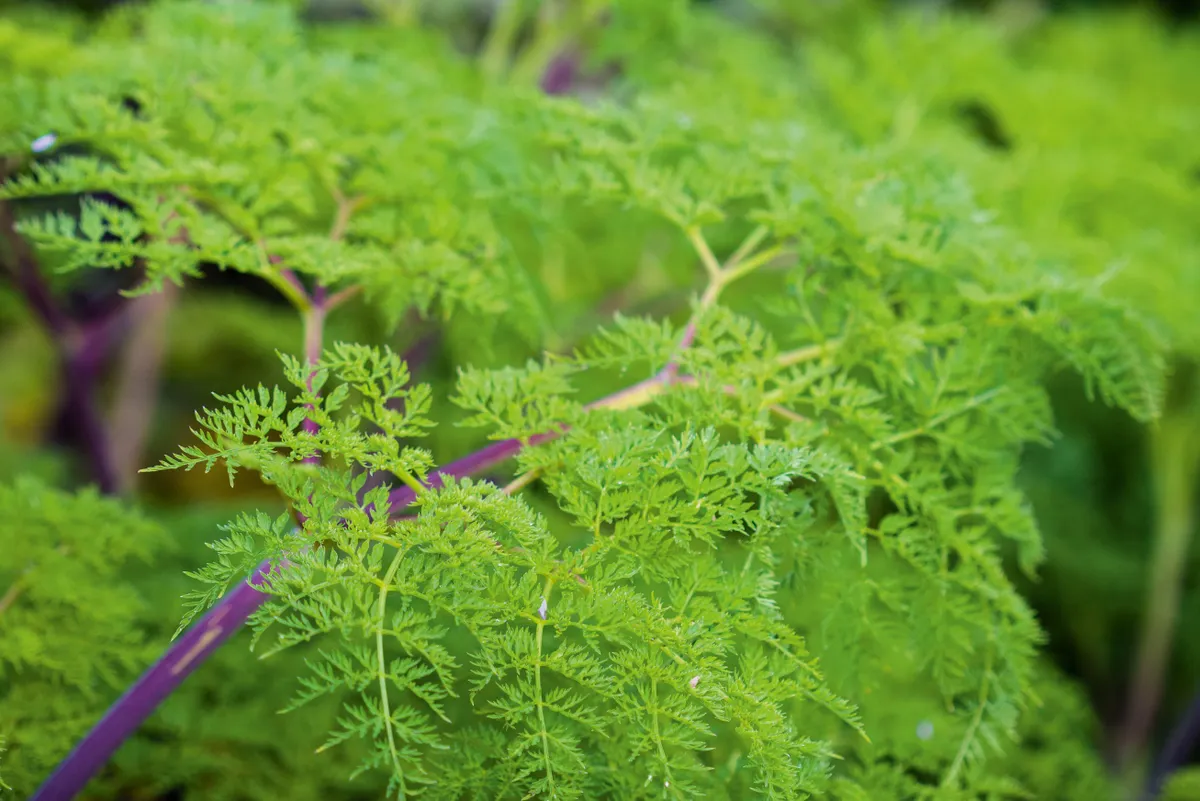
A wonderful ornamental cow parsley with finely cut leaves and umbels of white flowers in summer. Somewhat surprisingly prefers sun. 1.8m. AGM.
Rosa rubiginosa
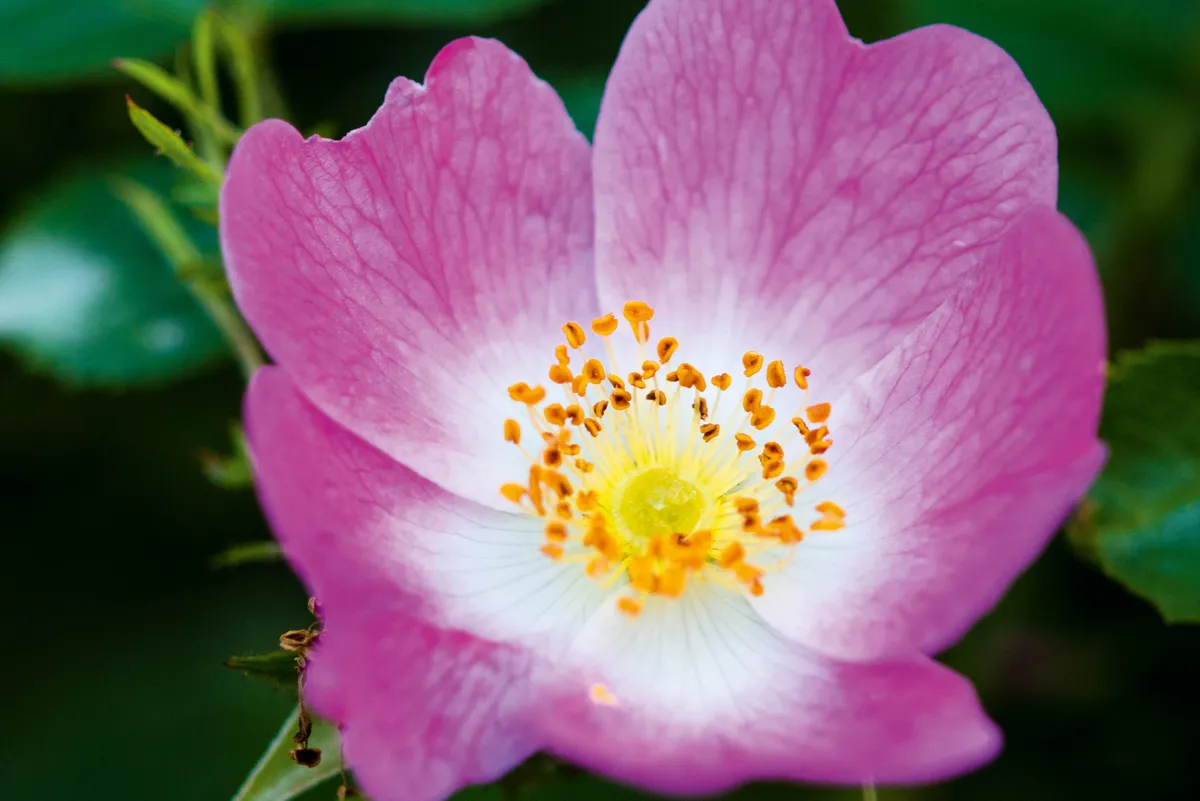
A vigorous species rose with grey-green scented foliage, pretty pink flowers and attractive red hips. Best when allowed to scramble. 3m.
Actaea simplex ‘James Compton’
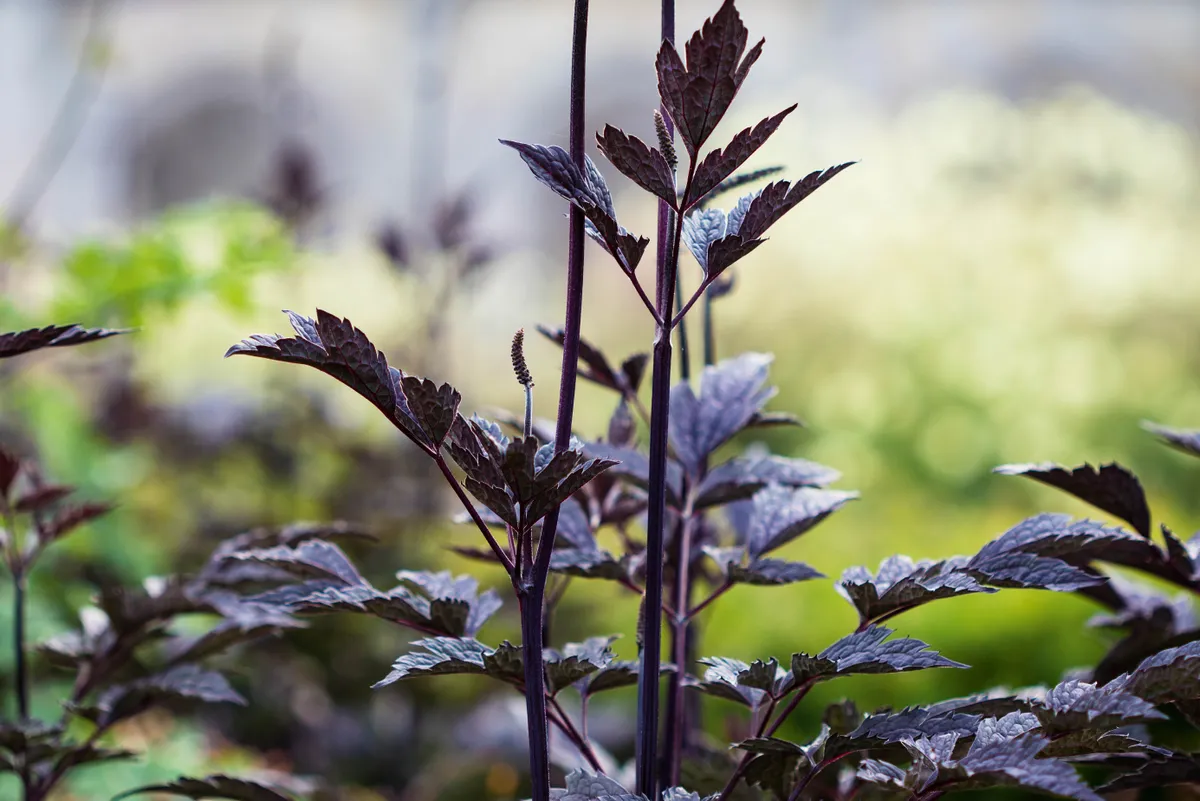
Has leaves that start dark green and mature to matt olive-black. Creamy white flower spikes emerge from pinkish buds. 1.5m. AGM.





